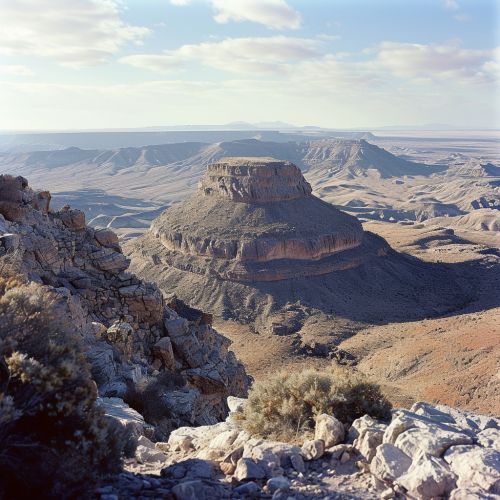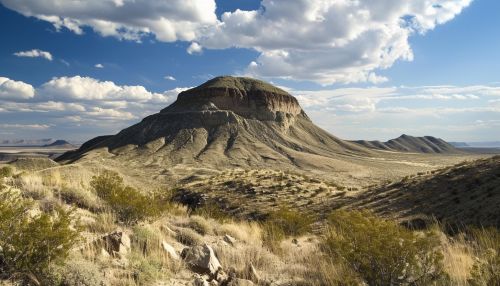Cima Dome
Geography
Cima Dome, also known as the Cima Volcanic Field, is a volcanic formation located in the Mojave Desert of Southern California in the United States. The dome is a prominent feature of the desert landscape and is easily visible from the nearby Interstate 15.


Geology
The Cima Dome is an example of a volcanic dome, a type of volcano that is formed by the slow extrusion of viscous lava from a volcano. The lava cools and hardens before it can spread very far, resulting in a dome-like shape. The Cima Dome is unique in that it is one of the largest and most symmetrical volcanic domes in North America.
The dome is composed primarily of andesite, a type of volcanic rock that is intermediate in composition between basalt and dacite. The andesite at Cima Dome is characterized by a high concentration of plagioclase feldspar, which gives the rock its characteristic light color.
Ecology
The Cima Dome is located within the Mojave National Preserve, and as such, it is home to a diverse array of desert flora and fauna. The dome is particularly well-known for its dense stands of Joshua trees, which are among the densest and largest in the world.
Other plant species found on the dome include the creosote bush, Mojave yucca, and various species of cacti. The dome is also home to a variety of desert wildlife, including the desert tortoise, coyote, and numerous species of birds and reptiles.
History
The area around Cima Dome has a long history of human habitation, with evidence of Native American occupation dating back thousands of years. The dome was likely a significant landmark for these early inhabitants, and it continues to be a significant feature of the landscape today.
In more recent history, the dome and the surrounding area were used for mining and ranching activities during the 19th and early 20th centuries. Today, the dome is located within the Mojave National Preserve and is managed by the National Park Service.
